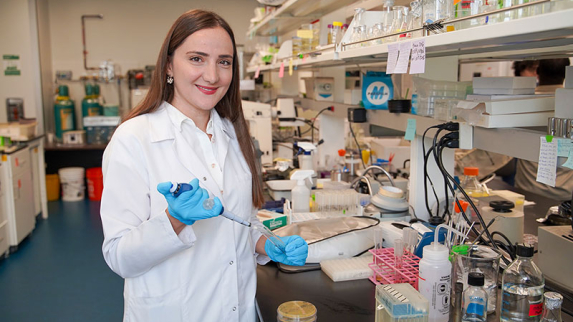Deep within the icy stillness of the glaciers and snowfields found across Alaska, British Columbia, and the Pacific Northwest lives a scientific marvel that could hold the key to life-saving breakthroughs in medicine and health: the Mesenchytras solifugus, more commonly known as the ice worm.
Close cousins of the earthworm, ice worms are small, black or dark brown in color, and rather unremarkable at first glance. However, their unique ability to thrive in below-freezing temperatures inspired scientist Tugba Avan to travel more than 5,300 miles from her home in Turkey to the Rutgers University–Camden campus, where she hopes to unlock ice worms’ cellular secrets.
“Daniel Shain‘s research here at Rutgers–Camden has shown that ice worms have unusually high levels of intracellular adenosine triphosphate (ATP), which serves as the primary energy source for all living cells,” Avan said. “Additionally, his research has shown that their levels of ATP increase as temperatures decrease, a notable contrast to other organisms.”
Avan is a medical doctor and assistant professor in the Department of Medical Microbiology at Ahi Evran University in Kirsehir, Turkey, where she focuses on the relationship between organisms and disease. In 2022, she attended the Ahi Evran International Medical and Health Sciences Congress, where Shain was presenting his work on ice worms. She realized a collaboration with Shain would allow her to build upon her existing knowledge and expand her research beyond the clinical samples she worked with in Turkey. But arranging long-term travel to the United States would not be easy.
Undeterred by the distance, Avan applied for and received a prestigious fellowship from Turkey’s leading research agency and arrived to New Jersey in early 2024. She will spend a year at Rutgers–Camden, furthering her research and collaborating with Shain and his team. To read the full story.

